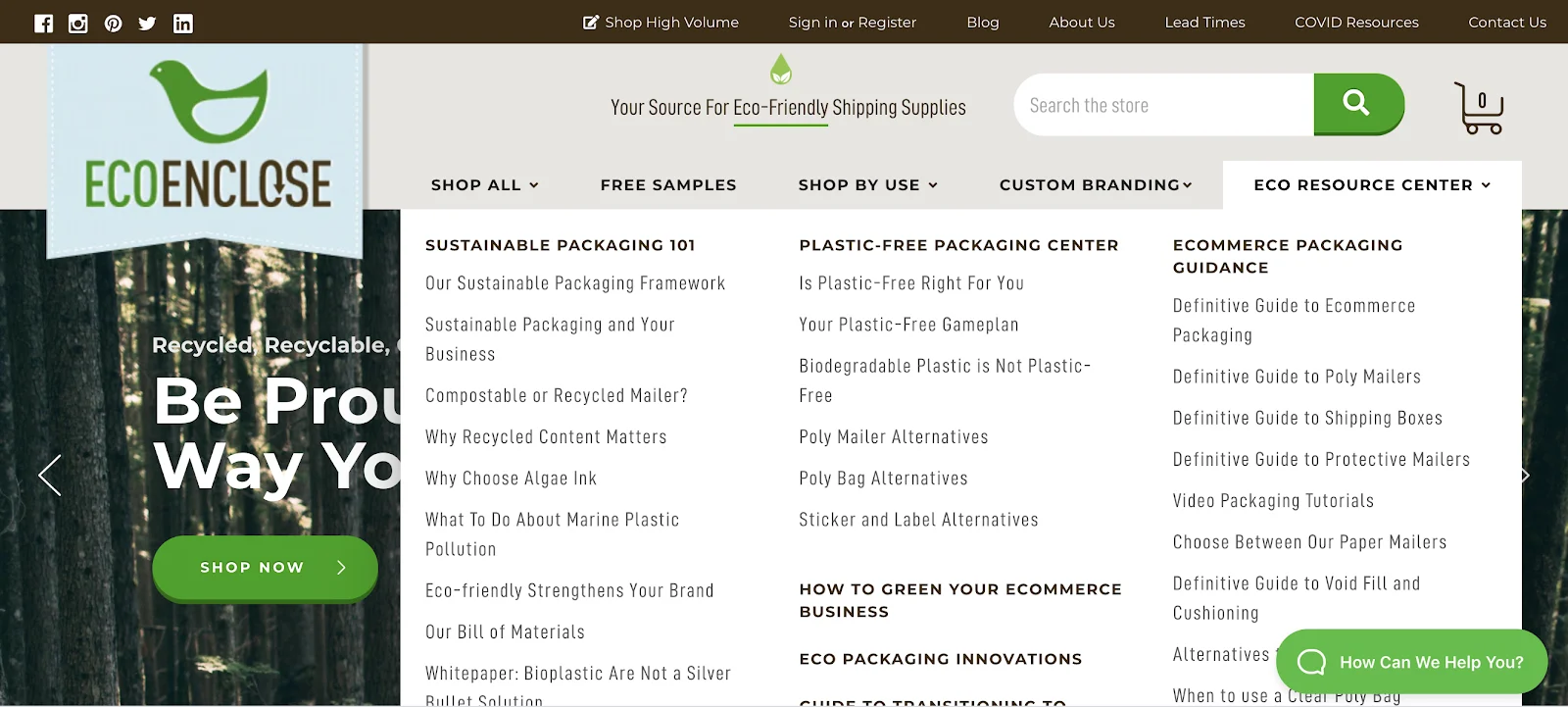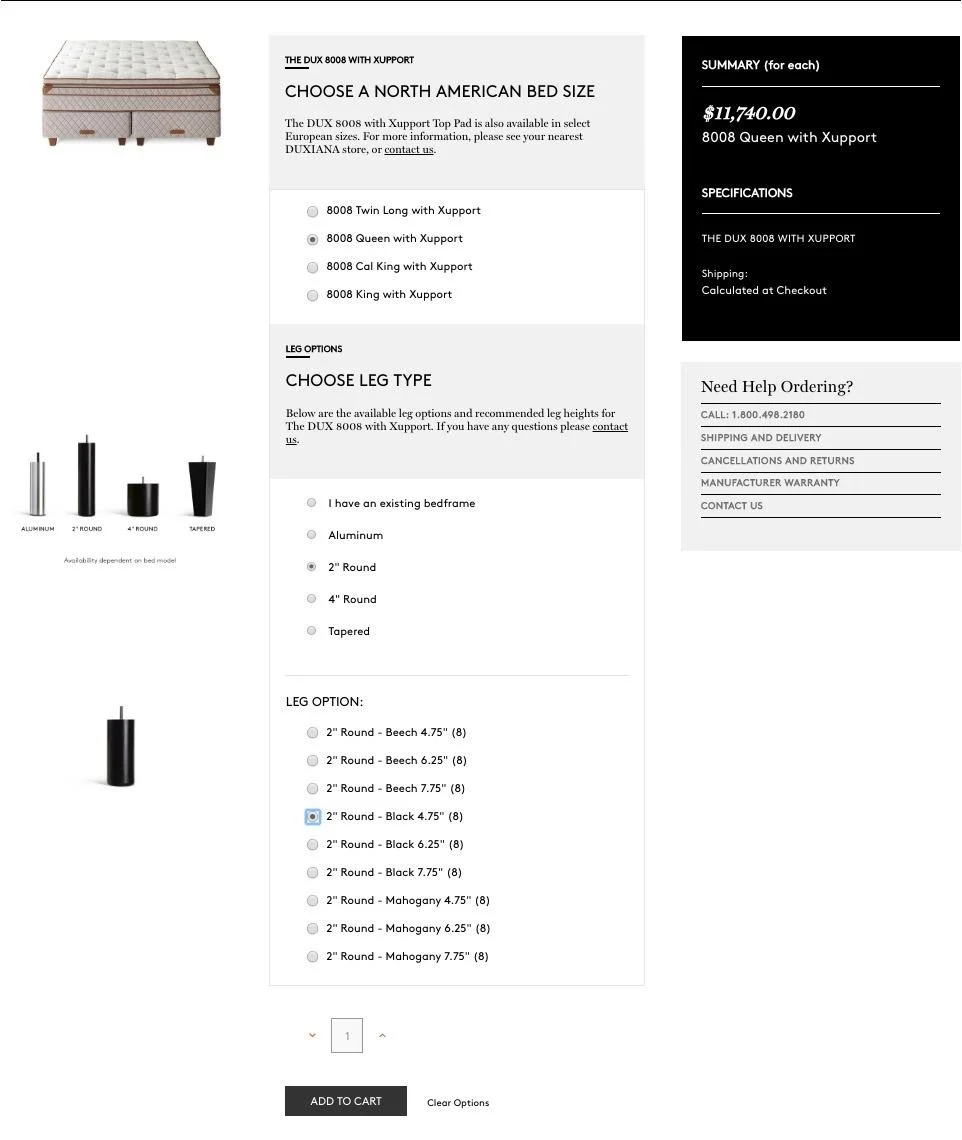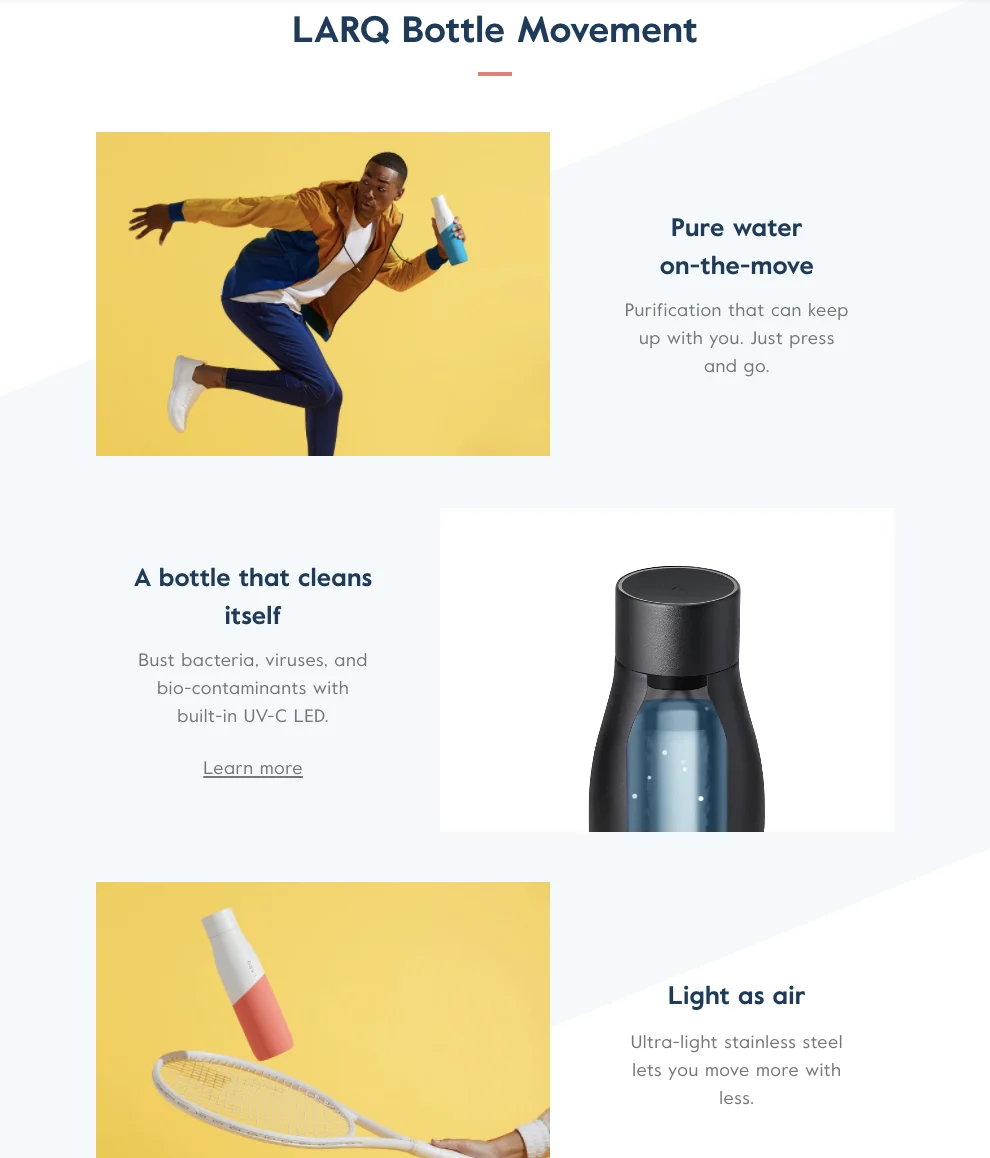The written word is a powerful thing.
Writing ideas and concepts make them concrete in our minds. By seeing or hearing words, we are able to internalize and understand new ideas and allow them to affect our behavior.
Helen Keller, who for the first 6 years of her life lived without language due to being born blind and deaf, describes awakening to words and communication for the first time: “Suddenly, I knew not how or where or when, my brain felt the impact of another mind and I awoke to language, to knowledge, to love, to the usual concepts of nature, of good and evil! I was actually lifted from nothingness to human life.”
It’s powerful, in part because she’s a great writer, but it underlies something we so often take for granted: for most of us words are our way to communicate. They are our way of connecting to fellow human beings.
As a writer and content marketer myself, you may find me a little biased, but I truly believe that content and commerce should be a vital part of most marketing strategies. After all, no matter what you are selling or who your end user is, your customers are people.
And—whether they are engaged, persuaded, entertained, or educated by them—people respond to words.
If you’re considering adding a strong content marketing strategy to your ecommerce business, read on. In this article, we’re diving into the connection between commerce and online content, why it’s more important than ever in the customer journey, and how you can harness the power of content for your online business.
What is Content Commerce?
Content-led commerce, content and commerce, content marketing, what do they all mean? Essentially, they all amount to the same thing: using informative content as a marketing tool.
In the introduction, I championed the power of the written word, but to be clear, content is not the only way to use language to reach your audience. Content includes not only blog posts, ebooks, and white papers but infographics, videos, podcasts, webinars, one-pagers and more. If you’re using it to transmit information through language and visuals, chances are its content.
The reason content has become such an important part of ecommerce and digital marketing is because of how customer shopping behavior has evolved. People don’t just want to be sold to via traditional ads. They aren’t thumbing through catalogues for their commerce experience. They’re bombarded with advertising day in and day out.
In response, customers have started to do their own product research before making a purchase. Rather than allowing a brand to dictate their choices, customers are relying more and more on their own analysis and evaluation. This is why content is so important. It can build relationships with customers and also educate them about their options. It can provide them valuable information about your products without overtly selling them.
Content-driven commerce is an investment in building a brand narrative to spark customer interest and drive conversion. But beyond that, it’s about connecting with customers to provide them valuable information and build long term relationships.
And research shows more and more marketers are using these strategies. Consider these statistics:
91% of companies surveyed worldwide reported having a content marketing strategy in place in 2019.
70% of marketers are actively investing in content marketing.
Now that we’ve outlined what content + commerce means, let’s look at some of the reasons and ways you may want to use content in your ecommerce marketing.
Differentiating Your Online Store With Content
Unless you’re selling a totally niche product, chances are you have competition out there. You may have similar products and even price points to some of your competitors.
Content is one way you can differentiate your brand and use your brand story and user experience to encourage consumers to choose your products over other options.
This composable commerce strategy provides a way to create more touchpoints with customers and build stories that resonate with them. By doing this, they are more likely to remember your brand and think of it when in the market for your particular products.
Driving Down Customer Acquisition Costs
Another advantage of content marketing is the opportunity to drive down your customer acquisition costs (CAC). The cost to acquire new customers has increased due to the rising costs of paid advertising or outbound marketing. This includes digital marketing like pay- per-click advertising and other traditional marketing methods to pay for ads to reach new customers.
Lowering CAC can be an important step to growing your business and increasing revenue. If you can bring in and retain more customers for a lower cost, you can invest the savings elsewhere in growing your business.
Using Content to Support the Customer Journey
The customer journey is no longer a straight line to purchase. (It’s far more akin to a complex hedge maze.) Your digital commerce marketing should reflect those intricacies.
This article from Google shares the vast range of touchpoints a customer may have in their search for various products—anywhere from a dozen to hundreds of touchpoints. However, there are still commonalities we can expect. One study found that 80% of people do online research when making a purchasing decision and that online search was often the first touchpoint.
Essentially, no two customer journeys are alike. The key is to know your customers well, so you can understand how to best support them through their path to purchase. You can also follow these guidelines for best practices.
1. Coordinate marketing and product departments.
When it comes to a good content marketing strategy, the left hand really needs to know what the right is doing. Design your business model such that your marketing and product departments are in lockstep. This makes sure you’re providing relevant content that is both helpful to consumers and supportive of the products and services you actually offer.
This tool provides a valuable resource for customers, but also ties back to the brand’s products to support customers on their continued journey to purchase.
2. Inform, don’t sell, with your content.
If your first priority is to sell your products to your customer, they will see right through that and be less likely to engage with your content. When creating content, be sure to give them something of value that they can use in making their purchasing decisions.
Here’s an example from EcoEnclose, a maker of sustainable packaging. Their site is a treasure trove of information about sustainable packaging and shipping options.

A customer could easily use their resources just to educate themselves about the sustainable packaging industry. However, they will also be more likely to return to EcoEnclose’s site as a source of information, and thus may be more likely to convert when they are ready to make a decision on their next packaging purchase.
3. Build a relationship with visitors.
Again, the customer journey is long and winding. Think of your content strategy as a long game. Your goal is to build strong relationships with customers that will not only encourage them to buy your products once, but to come back to your ecommerce store time and time again.
CBD brand CBD for Life demonstrates how they do this with their blog content. They provide informative, but also timely, updates to help connect with customers and foster relationships. For example, during the COVID-19 pandemic when many people were abiding by Shelter in Place policies, they provided a blog post on how their products can be used during these specific times. They also shared content on Instagram showcasing how their brand is helping.

Using your content across channels to create a consistent brand narrative and connect with customers will help you create lasting relationships with them.
Combining CMS and Headless = Complete Content Strategy
So far most of the advice we’ve shared is on your content itself and how to frame it, but what about the actual process of hosting it on your website? What’s the best way to integrate your content marketing strategy with your online store for a seamless brand experience?
One method is to use headless commerce to connect your content management system (CMS) and ecommerce platform. Headless commerce means decoupling your frontend system from your backend ecommerce functionality. The two are then connected and can share data through API calls.
The advantage of this is you can get the best of both worlds: have a backend system with the latest ecommerce functionality to power your shopping cart plus a frontend system that is specialized for displaying the content or digital experience you want to create.
It’s important to note that, when choosing a frontend solution for your headless tech stack, a CMS isn’t your only option. You can actually connect a digital experience platform (DXP), progressive web app (PWA), IoT (Internet of Things) device, or custom build of your choice. The world of technology solutions is your proverbial oyster! Choosing the right frontend will be determined by not only your content marketing strategy but by the type of digital experience you want to deliver.
Now let’s consider how headless can strengthen your content marketing strategy and the content and commerce relationship.
Headless: Fostering the Ultimate Content and Commerce Relationship
Having a headless solution means you can have a frontend specialized for delivering the exact content experience you want, while also maintaining a backend ecommerce system that can provide security, stability, and scalability.
Here are some of the ways that using headless can benefit your content and commerce plan.
1. Consistent branding and messaging across channels.
One part of providing an unbeatable digital experience is keeping your brand and messaging clear and consistent through everything you do. Earlier we discussed how the customer journey is more and more omnichannel. Customers may see you on social media first, then your mobile site, then on a marketplace like Amazon, and finally on your ecommerce site.
If they have one experience on mobile and a totally different one on your website, that can be confusing. Similarly, if potential customers who are going to convert find your checkout redirects them from the rest of the site, the experience can be jarring. With headless, you’re able to provide a seamless experience across both your content and shopping cart.
Duxiana, a seller of luxury mattresses, provides a clear message with their content throughout their website.

For example, these images show the science behind their products:

The same clean design, purposeful-informative content, and clear messaging follows throughout their website on product pages and through to checkout:

Duxiana is able to provide this seamless consistency of content and commerce through a headless build that includes BigCommerce on the backend and Sitecore as the CMS on the frontend.
2. Deeper personalization.
We are entering an age when customers expect personalized shopping experiences more and more. In fact, one source found that 80% of shoppers are more likely to make a purchase from a brand that offers a personalized experience.
Headless can help you provide these hyper-personalized experiences by allowing you to utilize a frontend, including AI and machine learning, as part of your tech stack that can tailor content or digital experience to your customers. For a more simplified personalization, a good CMS can track customer preferences and adjust content for them throughout the site.
3. Selling internationally.
If one of your growth priorities includes international expansion or cross-border selling, you need your site to be ready to accommodate it. Headless can help speed up development and marketing cycles making it easier to adjust content and launch new regional sites quickly.
LARQ, a seller of self-purifying water bottles, was prioritizing international expansion, so they went with a headless build for their site. They were able to launch four regional sites that can each maintain unique, localized content and with support for multi-currency.

LARQ used BigCommerce for their ecommerce backend because of the headless solutions and support for multi-currency. For their frontend content, they use a system custom-built with React, a JavaScript library for building user interfaces.
When Headless Makes Sense for Your Content
Is headless the right choice for your brand? It’s definitely possible to establish a content marketing strategy without a headless build; however, there are many use cases where it could be a great option.
1. You already have an established, advanced CMS.
Don’t throw the baby out with the bathwater. If you already have a CMS your team is used to working with and love, headless can enable you to keep what’s working, while adding in a stronger ecommerce platform on the backend. That way you can keep the beautiful site you’ve already designed, maintain the processes your marketing and development teams already use, and not lose the progress you’ve made.
2. You're frequently changing content.
Part of a good content strategy often means making frequent updates. Testing and providing fresh content keeps customers coming back and engaging with your site. Headless can help make your marketing and development cycles more efficient. Because the two systems are decoupled, your marketing teams can work on the frontend system without disrupting development changes on the backend, and vice versa.
3. You have rapid growth and need to scale.
Growth is great! But if it happens quickly, it might mean you need to get a new ecommerce solution that can handle your increased site traffic and sales, fast. Choosing an ecommerce platform that has the power to grow with your business doesn’t mean you have to sacrifice the ideal digital experience or content-led strategy you’ve honed. With headless you can choose best-in-breed solutions on both the front and backend.
4. You can’t use traditional ecommerce templates.
Earlier we talked about the importance of using content to help differentiate your brand. What if your innovative, out-of-the-box thinking is so differentiated it can’t be stifled by templates? Headless can give you limitless options by letting you do essentially whatever you want on the frontend. There are so many existing technologies to choose from and, of course, you always have the option to custom-build your own solution as well.
Conclusion
Words and language connect people. Your customers are people. Building relationships with them starts with providing content that can inform, inspire, and delight them.
Integrating a content marketing strategy with your online store can increase your conversion rates, while also improving customer retention as you foster long-term connections.
Headless is one potential path to forging a strong content marketing strategy by arming you with best-in-breed solutions for both a frontend content management system and a backend ecommerce powerhouse.
